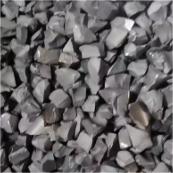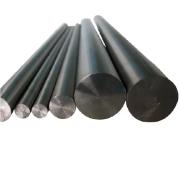Title: Do Skinny Metal Sheets Lose Their Magnetic Mojo?
(Are Thin Metal Plates Less Magnetic)
Picture this: you’re trying to stick a fridge magnet to a flimsy metal baking tray, but it slides off like butter on a hot pan. Meanwhile, the same magnet clings to your cast-iron skillet like a koala to a eucalyptus tree. What gives? Are thin metal plates just…bad at being magnetic? Let’s dive into the quirky science of magnetism and find out why some metals seem to lose their “attraction game” when they go on a diet.
First off, magnetism isn’t a one-size-fits-all superpower. Metals like iron, nickel, and cobalt are the rockstars of magnetism—they’re called ferromagnetic materials. These metals have tiny regions called magnetic domains, where atoms line up like synchronized swimmers to create a magnetic field. When you magnetize them, these domains snap into alignment, turning the metal into a temporary or permanent magnet. But here’s the twist: thickness *does* matter.
Thin metal plates have less material to work with. Imagine a choir: the thicker the metal, the more singers you have belting out a magnetic chorus. Thin sheets? They’re more like a trio trying to fill a concert hall. With fewer atoms aligned, their magnetic strength weakens. But wait—it’s not *just* about thickness. The metal’s composition plays a role too. A thick slab of aluminum won’t be magnetic no matter how chunky it is, while a razor-thin sheet of iron might still attract a magnet (even if it’s not winning any strength contests).
Here’s where things get spicy: magnetism isn’t just about being *magnetic*; it’s also about being *magnetizable*. Thin plates might still respond to a magnet’s pull (like sticking to your fridge), but they’re less likely to *become* magnets themselves. Think of it like a party guest who’s happy to follow the crowd but won’t start the conga line. Thicker metals, on the other hand, can store more magnetic energy, making them better at holding onto that magnetism long-term.
But wait—don’t blame the thin metal entirely! Shape and structure matter too. A crumpled-up thin foil might trap magnetic fields in its nooks and crannies, acting slightly more magnetic than a flat sheet. It’s like how a wrinkled blanket holds more heat than a neatly folded one. Meanwhile, a smooth, thin plate lets magnetic fields slip through like sand through a sieve.
Let’s bust a myth while we’re here: non-magnetic metals like aluminum or copper won’t magically gain magnetism if you make them thicker. They’re the introverts of the metal world—no amount of peer pressure (or thickness) will make them join the magnetic party. But ferromagnetic thin plates? They’re the wallflowers who might dance if you ask nicely…but you’ll need a strong magnet to get them moving.
So, do thin metal plates suck at being magnetic? Sort of—but it’s complicated. Their magnetic mojo depends on their material, thickness, and even their texture. A thin iron sheet might still attract a magnet, but it’ll never be as clingy as its thicker cousin. And if you’re trying to build a DIY electromagnet or shield something from magnetic fields, thickness becomes your best friend (or worst enemy).
(Are Thin Metal Plates Less Magnetic)
In the end, thin metal plates aren’t “less magnetic” in a universal sense—they’re just pickier about how they show off their skills. So next time your fridge magnet tumbles off that cookie sheet, cut it some slack. It’s not lazy; it’s just living its best thin-metal life.
Inquiry us
if you want to want to know more, please feel free to contact us. (nanotrun@yahoo.com)


